Sumatra Selatan
South Sumatra
Sumatra Selatan - South Sumatra
Bersatu Teguh - Stand Together
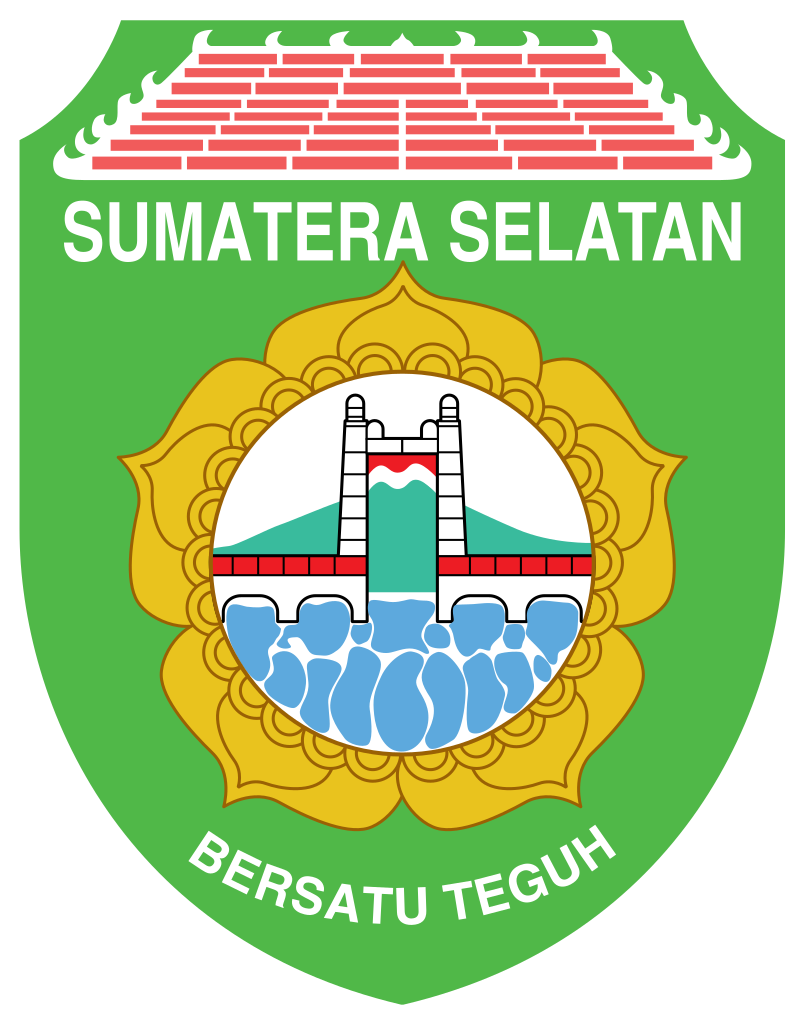 South Sumatra (Indonesian: Sumatra Selatan) is a province of Indonesia. It is located on the southeast of the island of Sumatra, The province spans 91,592.43 km2 (35,364 sq mi) and had a population of 8,467,432 at the 2020 Census. The capital of the province is Palembang. The province borders the provinces of Jambi to the north, Bengkulu to the west and Lampung to the south. The Bangka Strait in the east separates South Sumatra and the island of Bangka, which is part of the Bangka Belitung Islands province.
South Sumatra (Indonesian: Sumatra Selatan) is a province of Indonesia. It is located on the southeast of the island of Sumatra, The province spans 91,592.43 km2 (35,364 sq mi) and had a population of 8,467,432 at the 2020 Census. The capital of the province is Palembang. The province borders the provinces of Jambi to the north, Bengkulu to the west and Lampung to the south. The Bangka Strait in the east separates South Sumatra and the island of Bangka, which is part of the Bangka Belitung Islands province.
This province is rich in natural resources, such as petroleum, natural gas and coal. The province is inhabited by many different ethnic groups, with Palembang people the largest ethnic group. Most speak Palembang language, which is mutually unintelligible to both Indonesian and local Malay. Other ethnic groups include the Javanese, Sundanese, Minangkabau and Chinese. Most are concentrated in urban areas and are largely immigrants from other parts of Indonesia.
From the 7th century to the late 14th century, the province was the seat of the Buddhist Srivijaya Empire, which influenced much of Southeast Asia. Srivijaya was an important centre for the expansion of Buddhism from the 8th to the 12th century. Srivijaya was the first unified kingdom to dominate much of Indonesian archipelago. Owing to its geographical position, the capital of Srivijaya, Palembang, became a thriving port frequented by traders from the Middle-East, the Indian Sub-continent and China. At the height of its power, the territory of the Srivijaya Empire reached modern-day Thailand, Cambodia and Malaysia. After Srivijaya collapsed in the 14th century, small kingdoms began to establish itself in the province.
The Dutch controlled the region for the next century, but during World War II, the Japanese attacked Palembang and expelled the Dutch. The Japanese occupied the region until August 1945, when they surrendered to the Allied forces. The Dutch attempted to return to the region, but this was opposed by the newly declared Republic Of Indonesia, resulting in a War of Independence. In the end, the Dutch recognized the Indonesian sovereignty and withdrew from the region in 1950. The province of South Sumatra was then formed on 12 September 1950.
 History
History
Around 7th century AD, an ancient Buddhist kingdom of Srivijaya was established in an area known today as Palembang. This kingdom became the center of trade and was a maritime country, but this kingdom did not expand its power outside the islands of Southeast Asia, with the exception of contributing to the population of Madagascar as far as 3,300 miles west. Some experts are still debating the area that was the center of the Srivijaya Kingdom.
Southern Sumatra was occupied by the Japanese on January 15, 1942, after the Battle of Palembang in World War II. After the Proclamation of Indonesian Independence, South Sumatra became a part of Sumatra Province as a residency with Adnan Kapau Gani as the resident.
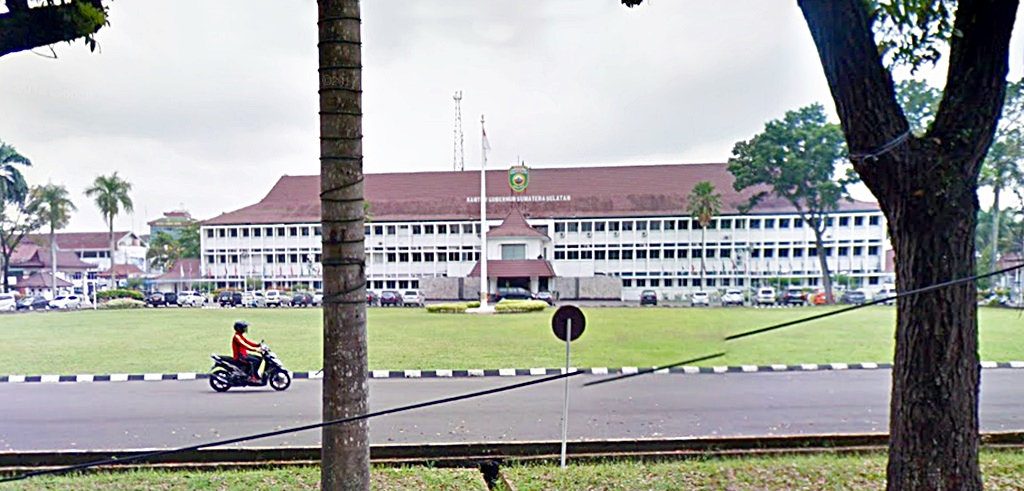 On January 1, 1947, the Dutch tried to gain its sovereignty over South Sumatra by invading Palembang. Since then, fighting ensued across South Sumatra until Indonesia’s independence was recognized by the Dutch on December 27, 1949.
On January 1, 1947, the Dutch tried to gain its sovereignty over South Sumatra by invading Palembang. Since then, fighting ensued across South Sumatra until Indonesia’s independence was recognized by the Dutch on December 27, 1949.
The area occupied by the Netherlands in South Sumatra was incorporated into South Sumatra State under the United States of Indonesia until the disbandment of the union and the founding of the republic.
Post-independence division of the province. On 12 September 1950, South Sumatra province was established with a territory much larger than it is today, as it encompassed the southern third of Sumatra island covering areas that were eventually formed into separate provinces: Lampung was carved from the southern part of the province in 1964, Bengkulu from the coastal western part of the province in 1967, and Bangka Belitung from the titular islands on 4 December 2000.

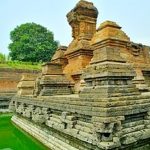

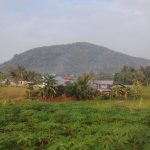
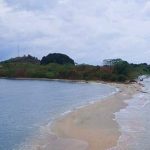
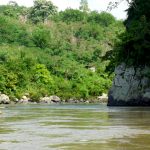
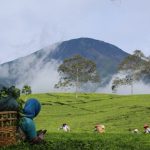
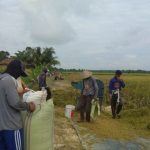
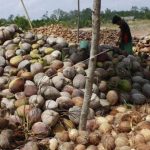
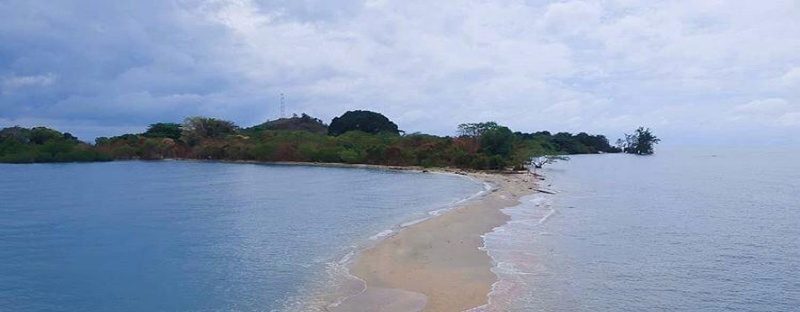 Geography
Geography
South Sumatra has an area of 91,592.43 square kilometres (35,364.03 sq mi) and is located on the island of Sumatra, western Indonesia which lies south of the equator at 1–4 degrees south and 102–108 degrees east.
The province is bordered by Jambi to the north, Lampung to the south and Bengkulu to the west, while in the east the Bangka Strait separates the province and the island-province of Bangka Belitung Islands.
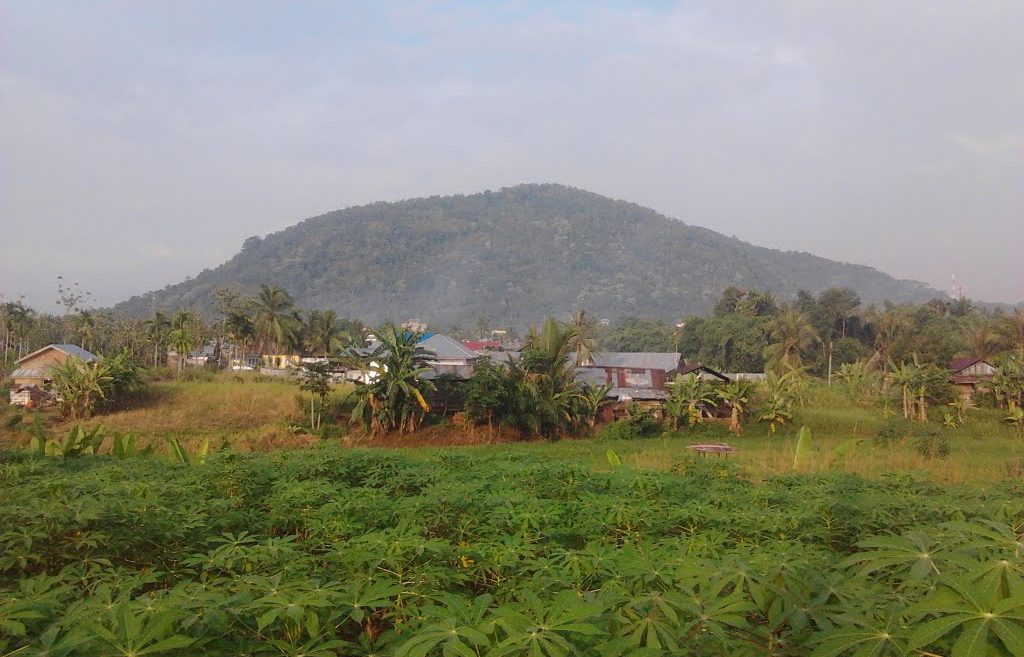 On the east coast the land consists of swamps and brackets which are affected by tides. Its vegetation is in the form of palmate plants and mangrove. A little more western is a vast lowland.
On the east coast the land consists of swamps and brackets which are affected by tides. Its vegetation is in the form of palmate plants and mangrove. A little more western is a vast lowland.
Far to the west near the border of Bengkulu and Jambi lies the Bukit Barisan mountains, which divides South Sumatra and is a mountainous area with an altitude of 900 to 1,200 metres (3,000 to 3,900 ft) above sea level.
Barisan Hill consists of the summit of Mount Seminung (1,964 metres or 6,444 feet asl), Mount Dempo (3,159 metres or 10,364 feet asl), Mount Patah (1,107 metres or 3,632 feet asl), and Mount Bungkuk (2,125 metres or 6,972 feet asl). To the west of Bukit Barisan is a slope.
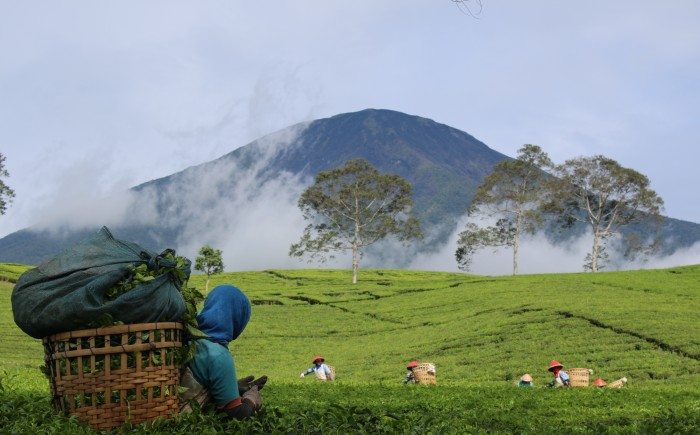 In the Bukit Barisan valley there are areas of rubber, oil palm, and agriculture plantations, especially coffee, tea and vegetables. Mount Dempo is the highest point in the province.
In the Bukit Barisan valley there are areas of rubber, oil palm, and agriculture plantations, especially coffee, tea and vegetables. Mount Dempo is the highest point in the province.
South Sumatra has large rivers that can be navigated, but currently, because of the silting process, cannot be navigated by large ships. Most of the rivers have flows from the Bukit Barisan mountains, except the Mesuji, Lalan and Banyuasin River.
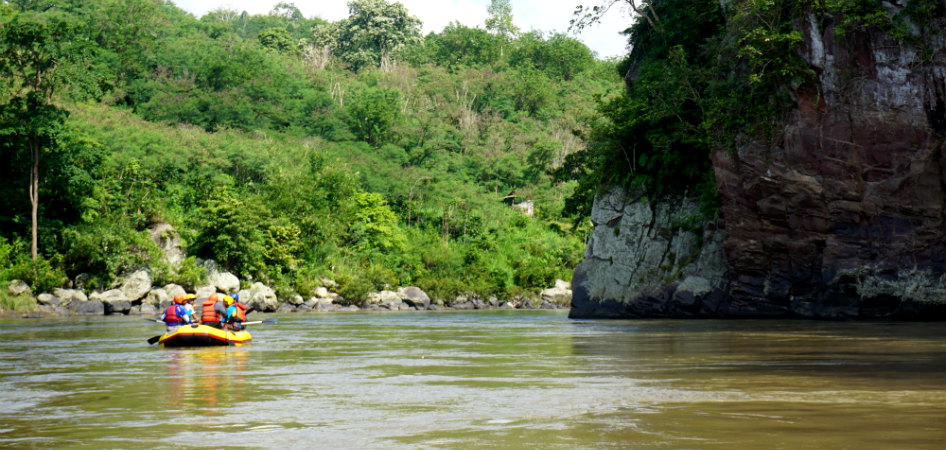 Most water from the South Sumatra section of Bukit Barisan mountains flows eastwards into Bangka Strait as Musi River, with Ogan, Komering, Lematang, Kelingi, Lakitan, Rupit River and Rawas River are its major tributaries. A few rivers in South Sumatra flow westwards into Indian Ocean, for example Manna River in Pagaralam and Tanjung Sakti.
Most water from the South Sumatra section of Bukit Barisan mountains flows eastwards into Bangka Strait as Musi River, with Ogan, Komering, Lematang, Kelingi, Lakitan, Rupit River and Rawas River are its major tributaries. A few rivers in South Sumatra flow westwards into Indian Ocean, for example Manna River in Pagaralam and Tanjung Sakti.
In January 2020, two islands in South Sumatra, Betet Island and Gundul Island, were submerged as a result of climate change, and four other islands were close to being submerged.
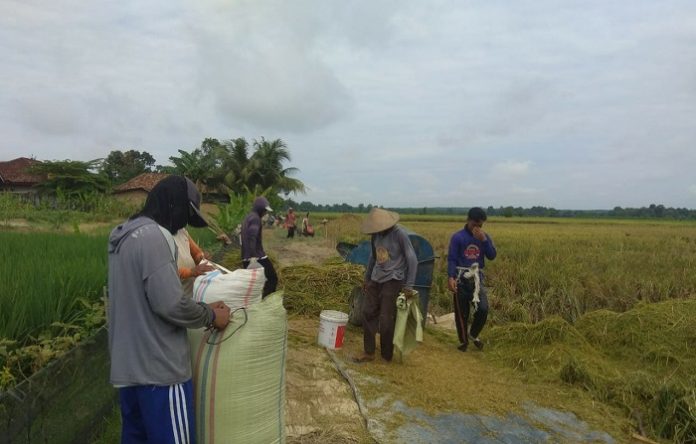 Climate. As in most other province of Indonesia, South Sumatra has a tropical rainforest climate (Köppen climate classification Af) bordering on a tropical monsoon climate. The climate is very much dictated by the surrounding sea and the prevailing wind system. It has high average temperature and high average rainfall.
Climate. As in most other province of Indonesia, South Sumatra has a tropical rainforest climate (Köppen climate classification Af) bordering on a tropical monsoon climate. The climate is very much dictated by the surrounding sea and the prevailing wind system. It has high average temperature and high average rainfall.
Throughout the year the province is only affected by two seasons, namely the rainy season and the dry season. The air temperature varies from 24.7 to 32.9 degrees Celsius with air humidity levels ranging from 82% to 88%.
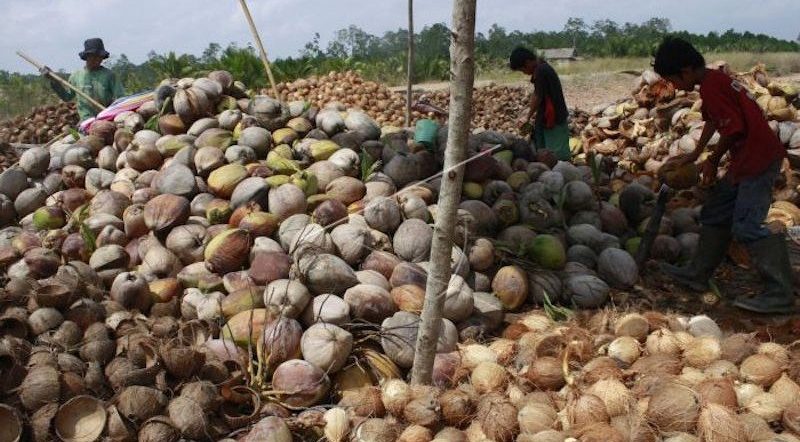 The relative rainy season falls from October to April. Variation in rainfall ranges from 2,100 to 3,264 millimetres (83 to 129 in). December is the month with the most rainfall while the drier season usually occurs from June to September.
The relative rainy season falls from October to April. Variation in rainfall ranges from 2,100 to 3,264 millimetres (83 to 129 in). December is the month with the most rainfall while the drier season usually occurs from June to September.
The climate in South Sumatra is similar to other regions in Indonesia, only known for two seasons, namely the dry season and the rainy season. From June to September southeast winds flow from Australia with relatively less water vapor, resulting in a drier season.
Conversely in December to March many wind currents contain water vapor from Asia and the Pacific Ocean during the rainy season. Such conditions occur every half year after passing the transition periods in between April – May and October – November.
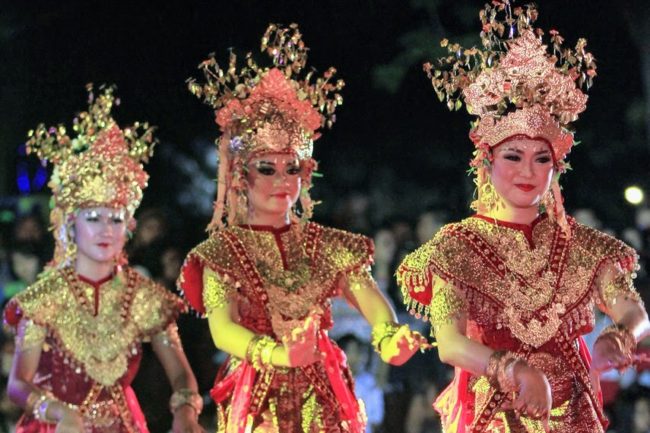 Demographics
Demographics
Ethnic groups. The province has no clear ethnic dominance, though the indigenous Musi-speaking Malays have a plurality, followed by the Javanese, most of whom have been recent migrants from Java as part of the government-sanctioned transmigration project created to balance the population, especially from the highly overpopulated Java island.
Forming the next largest group is the other Malayan-speaking populations as well as the Komering, a distinct Malayo-Polynesian people related to the native Lampungese from neighboring Lampung. Minangkabau, Chinese, and Sundanese also form minorities in the province.
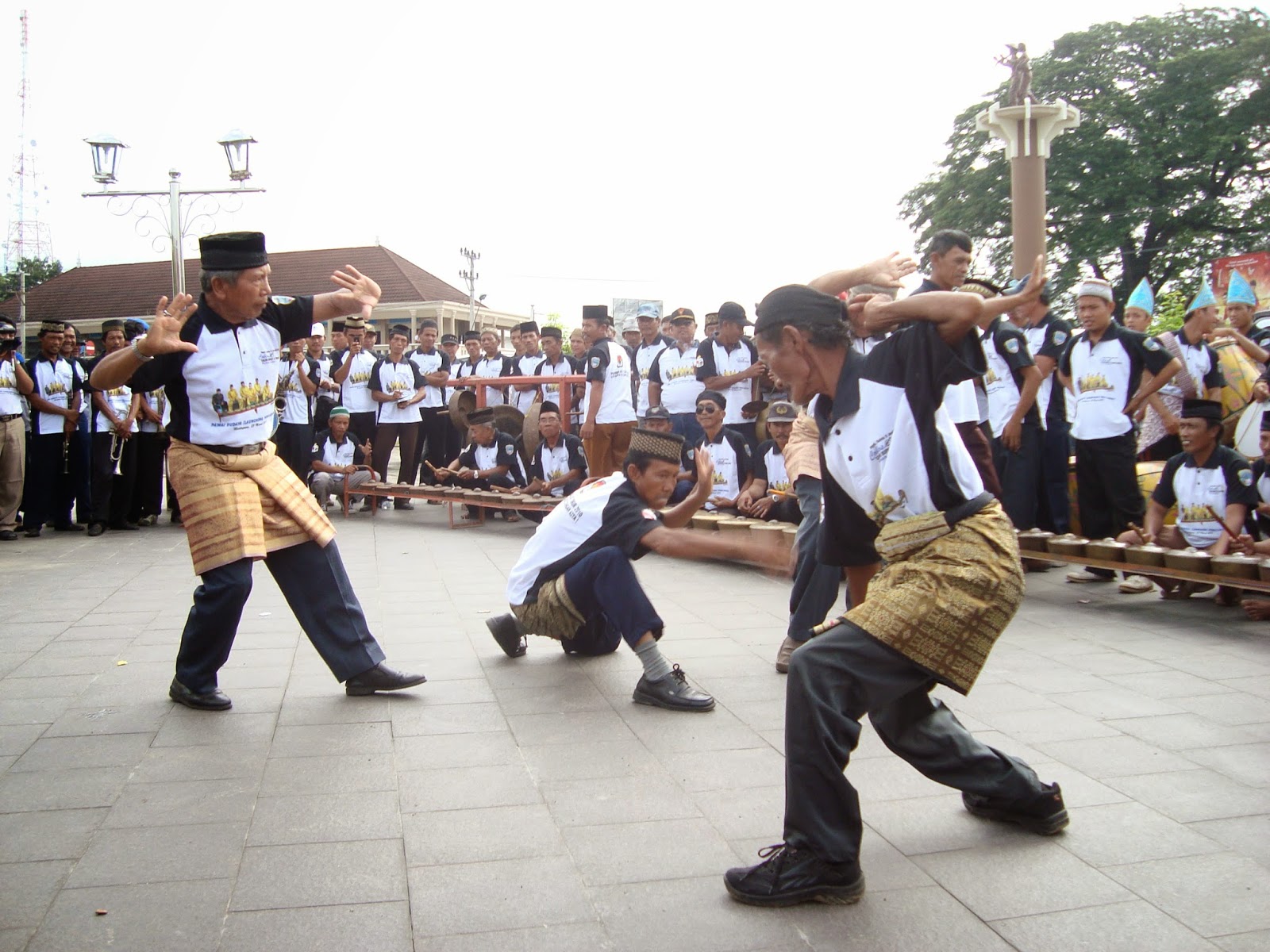 Malays are the majority in this province. They are also often called Palembang people. Palembang people are divided into two groups: Wong Jeroo is a descendant of nobility and is slightly lower than the courtiers from the past kingdom based in Palembang, and Wong Jabo is a commoner. An expert on the origin of Palembang people who are also descendants of the king, admitted that the Palembang people was the descendant of Arabs, Chinese, Javanese and other ethnic groups in Indonesia.
Malays are the majority in this province. They are also often called Palembang people. Palembang people are divided into two groups: Wong Jeroo is a descendant of nobility and is slightly lower than the courtiers from the past kingdom based in Palembang, and Wong Jabo is a commoner. An expert on the origin of Palembang people who are also descendants of the king, admitted that the Palembang people was the descendant of Arabs, Chinese, Javanese and other ethnic groups in Indonesia.
Palembang people itself has two different languages, namely Baso Palembang Alus and Baso Palembang Sari-Sari. The Palembang people still lives in a house built on water. The architectural model of the Palembang house which is most typical is the rumah limas which is mostly erected on stilts on the water to protect from flooding that continues to occur until now.
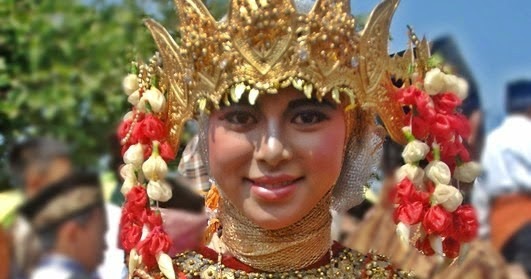 Komering is one of the tribes or cultural regions in South Sumatra, which is along the Komering River. Like other ethnic groupsin South Sumatra, the characteristic of this tribe is explorers so that the spread of this tribe is quite extensive up to Lampung. The Komering people is divided into two major groups: Komering Ilir who lives around Kayu Agung and Komering Ulu who live around the city of Baturaja. The Komering peopleis divided into several clans, including the Paku Sengkunyit clan, Sosoh Buay Rayap clan, Peliyung Pemuka Buay clan, Bu Madang clan, and the Semendawai clan.
Komering is one of the tribes or cultural regions in South Sumatra, which is along the Komering River. Like other ethnic groupsin South Sumatra, the characteristic of this tribe is explorers so that the spread of this tribe is quite extensive up to Lampung. The Komering people is divided into two major groups: Komering Ilir who lives around Kayu Agung and Komering Ulu who live around the city of Baturaja. The Komering peopleis divided into several clans, including the Paku Sengkunyit clan, Sosoh Buay Rayap clan, Peliyung Pemuka Buay clan, Bu Madang clan, and the Semendawai clan.
The Semendo people live in the Semendo District, Muara Enim Regency. Historically, the Semendo people came from the descendants of the Bantenese people who, in the past few centuries, traveled from Java to the island of Sumatra, and later settled and gave birth to grandchildren in the Semendo area. The language used in everyday life is the Semendo language.
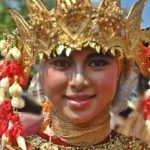

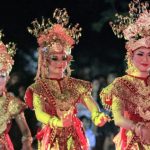
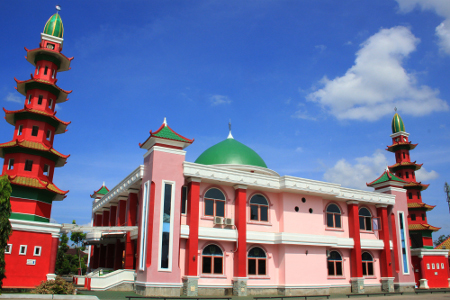 Religion.
The people of the province, as with other parts of Sumatra with the exception of Bangka Belitung and North Sumatra provinces, overwhelmingly follow the Shafi’i school of law of Sunni Islam. The religion is mainly adopted by the ethnic Malays, Javanese, Minangkabau, and Sundanese. Other minority religions are also practiced; the Chinese primarily follow Mahayana Buddhism and Christianity.
Religion.
The people of the province, as with other parts of Sumatra with the exception of Bangka Belitung and North Sumatra provinces, overwhelmingly follow the Shafi’i school of law of Sunni Islam. The religion is mainly adopted by the ethnic Malays, Javanese, Minangkabau, and Sundanese. Other minority religions are also practiced; the Chinese primarily follow Mahayana Buddhism and Christianity.
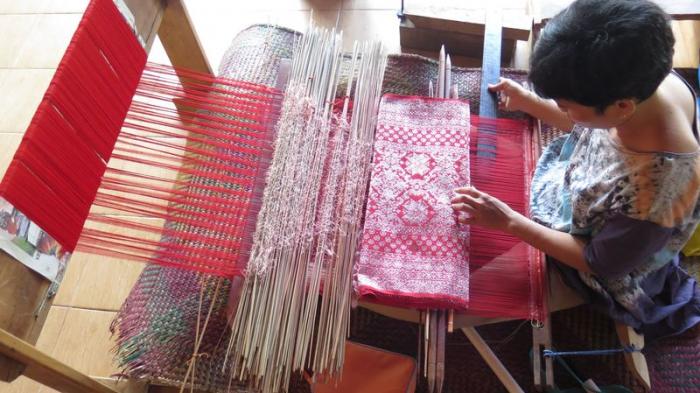 Language. While Indonesian is the official language in the province, most of the Malays speak a dialect of the Malay language called the Palembang Malay or Musi.
Language. While Indonesian is the official language in the province, most of the Malays speak a dialect of the Malay language called the Palembang Malay or Musi.
Currently, Palembang Malay has become the lingua franca in the region. Palembang Malay originated from the Old Malay language which blends with Javanese and is pronounced according to the accent of the Palembang people.
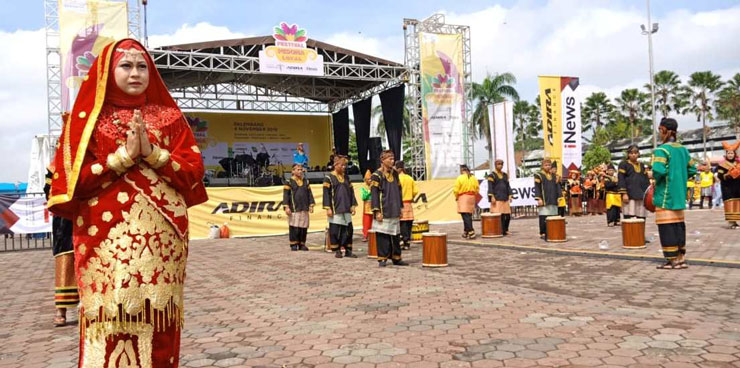 Palembang Malay consists of two register, first is the everyday language that is used almost by everyone in the city or also called the bahasa pasar (market language). Secondly is the polite and formal style (Bebaso), which is used by limited circles, such as sultans and nobility. Usually spoken by and for people who are respected or who are older. As used by children to parents, daughter-in-law to parents-in-law, students to teachers, or between speakers of the same age as the purpose of mutual respect, because Bebaso means to speak politely and subtly.
Palembang Malay consists of two register, first is the everyday language that is used almost by everyone in the city or also called the bahasa pasar (market language). Secondly is the polite and formal style (Bebaso), which is used by limited circles, such as sultans and nobility. Usually spoken by and for people who are respected or who are older. As used by children to parents, daughter-in-law to parents-in-law, students to teachers, or between speakers of the same age as the purpose of mutual respect, because Bebaso means to speak politely and subtly.
In addition to the indigenous people, in Palembang there are also migrants and descendants, such as from Java, Minangkabau, Madura, Bugis and Banjar. Many descendants living in Palembang are Chinese, Arabs and Indian. Indonesian is generally used as a second language and also as the language of education and for official purposes.
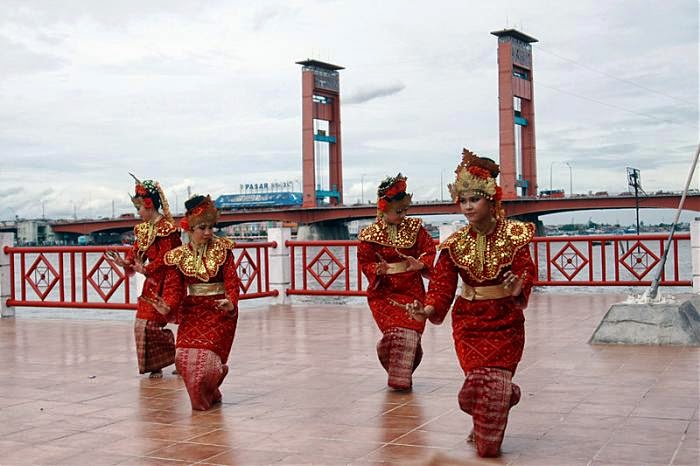 Culture
Culture
Like most other provincial cultures on the island of Sumatra, the culture of the province of South Sumatra is largely influenced by Malay culture. In addition, there are some cultures that are influenced by Islam, and some are influenced by the greatness of the Srivijaya kingdom.
South Sumatra’s cultural wealth includes traditional houses, traditional clothing, various types of dances, as well as typical food from the area. The cultural wealth of South Sumatra is not only popular within the South Sumatra region itself.
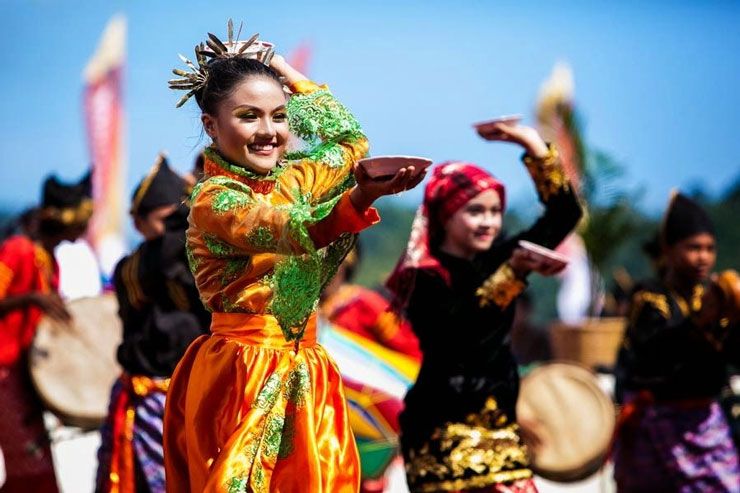 In all corners of Indonesia, various South Sumatran cultures are well-known, even popular with many people. An example is the rumah limas traditional house, this house has been adopted by many people in various regions because the construction is not complicated.
In all corners of Indonesia, various South Sumatran cultures are well-known, even popular with many people. An example is the rumah limas traditional house, this house has been adopted by many people in various regions because the construction is not complicated.
In addition, songket weaving is also a distinctive fabric favored by many people. The South Sumatran signature food, Pempek, can not only be found in the city of Palembang and the surrounding area, but also has spread throughout Indonesia as well as neighbouring countries such as Singapore and Malaysia.
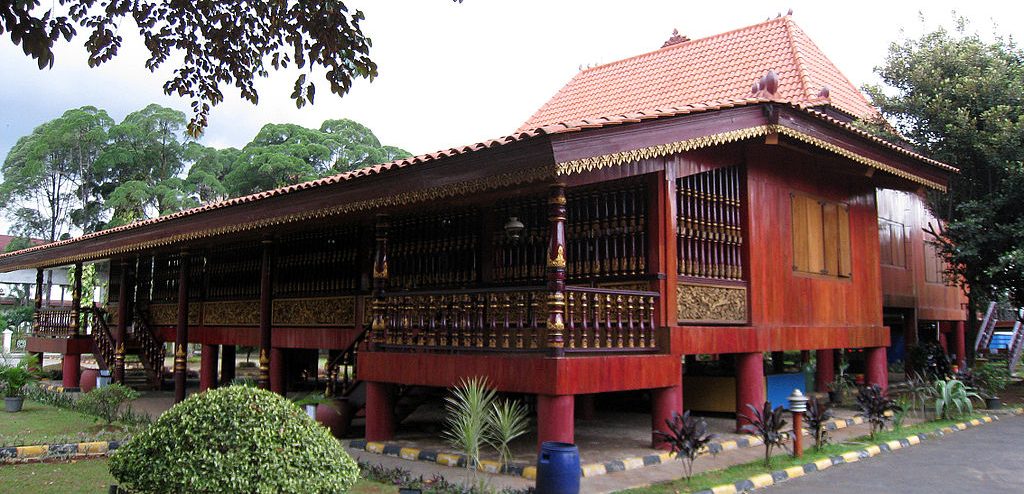 Rumah limas is a traditional house in the province of South Sumatra. The architecture of this traditional house is influenced by Islamic culture and Malay culture. Although this traditional house originated from South Sumatra, it has influenced the construction of other traditional houses in the other places.
Rumah limas is a traditional house in the province of South Sumatra. The architecture of this traditional house is influenced by Islamic culture and Malay culture. Although this traditional house originated from South Sumatra, it has influenced the construction of other traditional houses in the other places.
The main room is located at the top level and right under the limas roof. In this room there is an amben or a conference room. This room is located in the center of the rumah limas, both for customary and decorative purposes. The pangkeng section is a bedroom. This section of space is on the right or left side.
On the back is the pawon. pawon is part of the kitchen of this traditional house. The word pawon is actually not only known in South Sumatra. The Javanese people, besides adapting the Limas house shape, also recognize the word pawon to mention the position of the kitchen in their home.
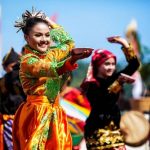

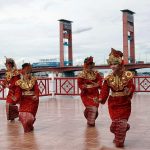
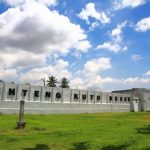

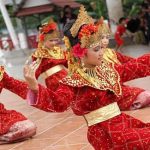
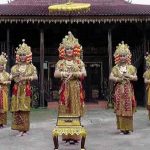
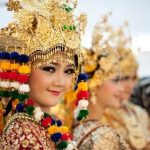

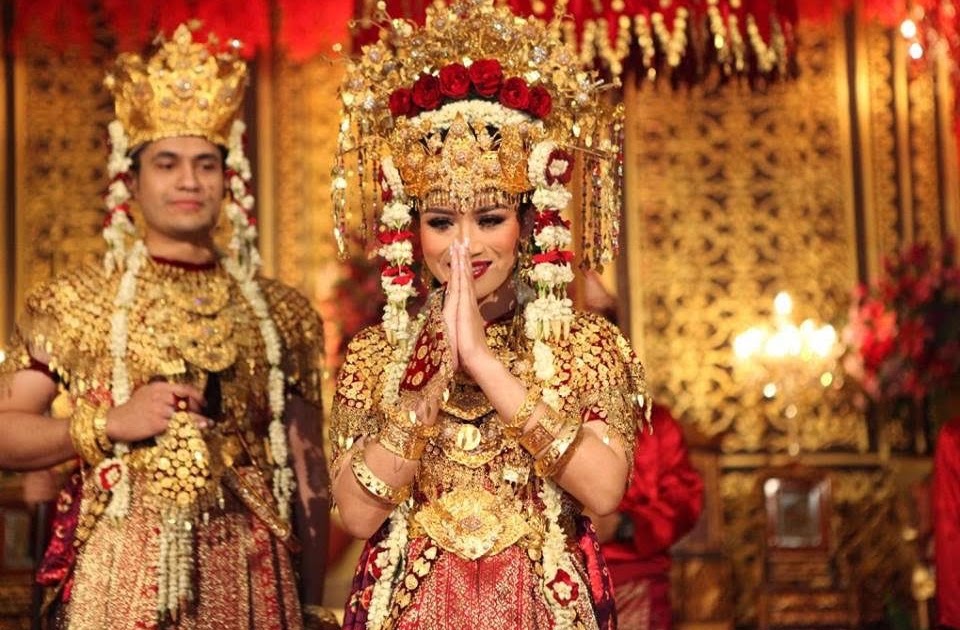 South Sumatra’s traditional clothes are known by the name Aesan gede, symbolizing greatness, and Aesan paksangko which that symbolizes the elegance of the people of South Sumatra. These traditional clothes are usually only used during traditional wedding ceremonies. With the understanding that this marriage ceremony is a big ceremony.
South Sumatra’s traditional clothes are known by the name Aesan gede, symbolizing greatness, and Aesan paksangko which that symbolizes the elegance of the people of South Sumatra. These traditional clothes are usually only used during traditional wedding ceremonies. With the understanding that this marriage ceremony is a big ceremony.
By using Aesan Gede or Aesan Paksangko as a bridal costume it means something very elegant because the bride and groom are portrayed as kings and queens. The difference between Aesan Gede and Aesan Paksongko patterns, if detailed as follows; Pink Gede style combined with golden color. Both colors are believed to reflect the majesty of the Sriwijaya nobles.
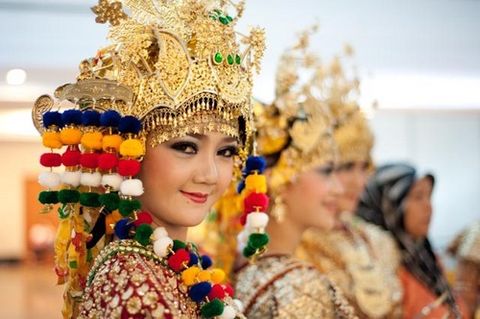 Especially with the glittering of complementary jewelry and the crown of Aesan Gede, bungo cempako, kembang goyang, and the standard kelapo. Then they are combined with dodot clothes and lepus songket cloth patterned in silver for the Aesan Paksangkong.
Especially with the glittering of complementary jewelry and the crown of Aesan Gede, bungo cempako, kembang goyang, and the standard kelapo. Then they are combined with dodot clothes and lepus songket cloth patterned in silver for the Aesan Paksangkong.
For men using gold embroidered songket lepus, robes of gold flower motifs, songket sling, sleeves, and golden songkok worn on the head. And for women using lotus, red noble brackets studded with golden star flowers, lepus songket cloth embroidered with gold, and headdress in the form of Aesan Paksangkong crown.
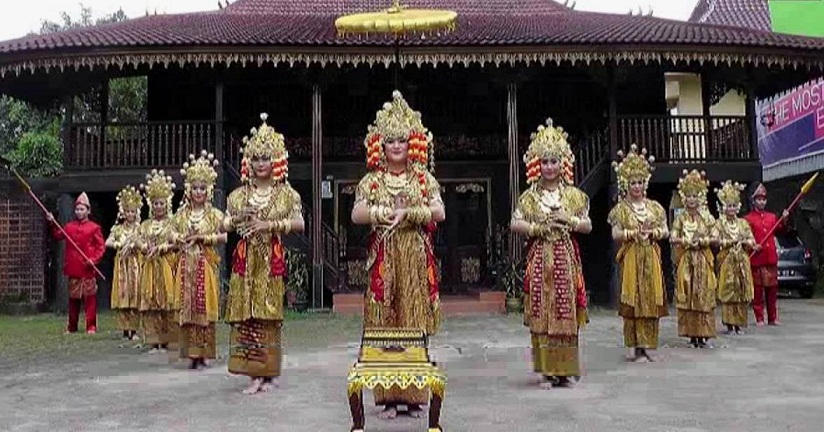 Gending Sriwijaya is a regional song and also a fairly popular dance from Palembang. This Gending Sriwijaya song was performed to accompany the tarian Gending Sriwijaya dance. Both songs and dances depict the nobility of culture, glory, and the majesty of the former Srivijaya Empire which once triumphed in uniting the western Nusantara.
Gending Sriwijaya is a regional song and also a fairly popular dance from Palembang. This Gending Sriwijaya song was performed to accompany the tarian Gending Sriwijaya dance. Both songs and dances depict the nobility of culture, glory, and the majesty of the former Srivijaya Empire which once triumphed in uniting the western Nusantara.
This Sriwijaya Gending dance from South Sumatra was performed to welcoming honored guests. Usually, this dance is performed by as many as thirteen dancers, consisting of nine core dancers and four companions and singers.
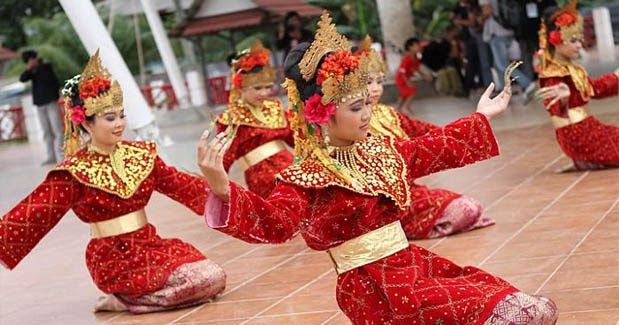 Tanggai dance is a traditional dance from South Sumatra that is also dedicated to welcoming honored guests. In contrast to Gending Sriwijaya dance, Tanggai dance is performed by five people wearing local clothing such as songket, dodot, pending, necklaces and other decorations.
Tanggai dance is a traditional dance from South Sumatra that is also dedicated to welcoming honored guests. In contrast to Gending Sriwijaya dance, Tanggai dance is performed by five people wearing local clothing such as songket, dodot, pending, necklaces and other decorations.
This dance is a combination of graceful motion with typical regional clothing. This dance describes the people of Palembang who are friendly and respectful, respecting and loving guests visiting their area. Tenun songket dance or tarian tenun songket is a reflection of the daily lives of housewives and young women in South Sumatra.
Kabupaten & Kota
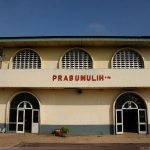
Prabumulih

Palembang
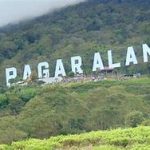
Pagar Alam

Lubuklinggau

Penukal Abab Lematang Ilir
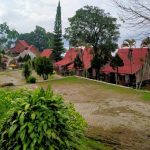
Ogan Komering Ulu

Ogan Komering Ulu Timur
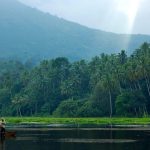
Ogan Komering Ulu Selatan
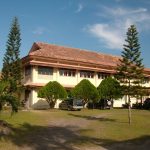
Ogan Komering Ilir
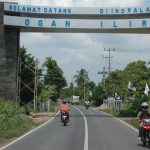
Ogan Ilir
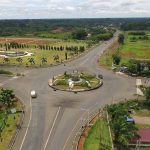
Musi Rawas

Musi Rawas Utara
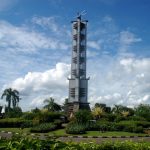
Musi Banyuasin
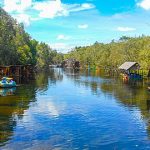
Muara Enim
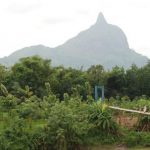
Lahat
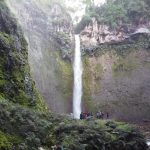
Empat Lawang
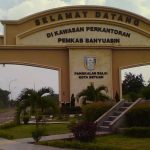
Banyuasin
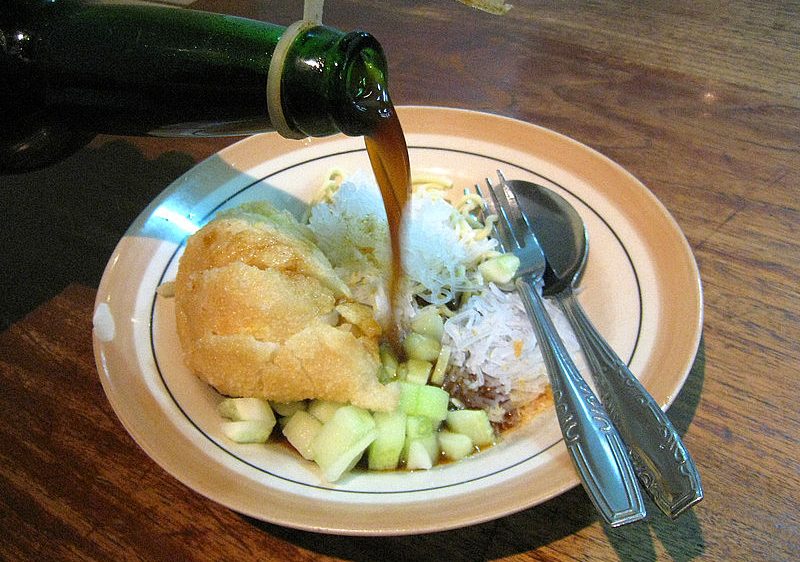 Cuisine
Cuisine
The South Sumatran cuisine or also known as the Palembang cuisine is the cuisine of the city of Palembang and the surrounding area in South Sumatra. It is the second most well-known cuisine from Sumatra after Padang.
Palembang cuisine primarily uses freshwater fish and prawns as key ingredients due to the paramount role of the Musi River for the area. Popular freshwater fish includes patin (Pangasius), baung (Hemibagrus), lais (Kryptopterus cryptopterus), lele (catfish), gabus (snakehead), mas (carp) and gurame (gourami).
 Historically, Palembang waters were teeming with belido (giant featherback), and it has become the city’s official animal mascot. It is valued for its succulent flavour and soft texture. However, due to overfishing, today the belido fish are scarce and probably already extinct in Musi river area.
Historically, Palembang waters were teeming with belido (giant featherback), and it has become the city’s official animal mascot. It is valued for its succulent flavour and soft texture. However, due to overfishing, today the belido fish are scarce and probably already extinct in Musi river area.
Because of its location that is not far from the sea, seafood such as shrimp, tenggiri (wahoo), kakap merah (red snapper) and Spanish mackerel are also popular in Palembang.
Besides freshwater fish dishes, there are many variations of dishes, snacks, drinks, and sweets in Palembang cuisine.
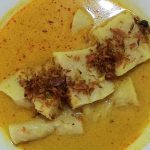


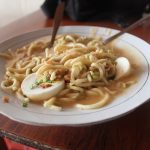
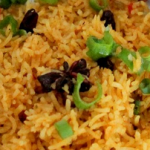
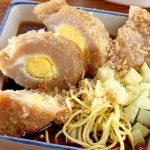
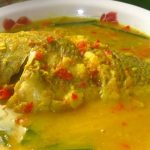
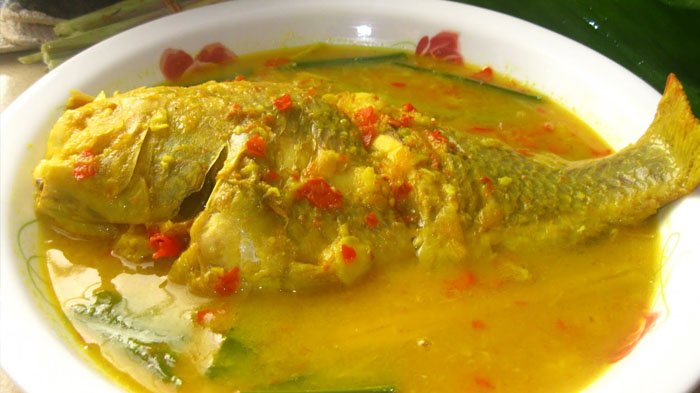 Spices are also generally included although not as liberally as its same-island counterpart. Palembang cuisine is noted by its preference for the sour and sweet flavour, as evidenced in pindang fish soup, strong-smelling tempoyak-based dish made from fermented durian, and also kuah cuko spicy sweet vinegar sauce of pempek fishcake. Those dishes are popular fare and often associated with the city.
Spices are also generally included although not as liberally as its same-island counterpart. Palembang cuisine is noted by its preference for the sour and sweet flavour, as evidenced in pindang fish soup, strong-smelling tempoyak-based dish made from fermented durian, and also kuah cuko spicy sweet vinegar sauce of pempek fishcake. Those dishes are popular fare and often associated with the city.
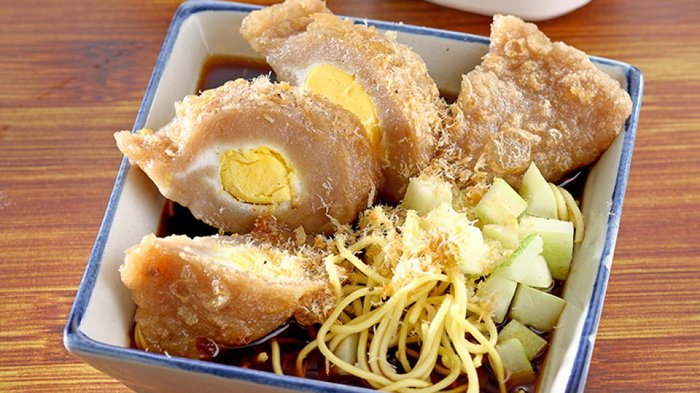 Malay, Javanese, Indian, and Chinese culture has influenced Palembang’s culinary scene. Pempek, tekwan and mie celor are the example of Chinese cuisine influence on Palembang.
Malay, Javanese, Indian, and Chinese culture has influenced Palembang’s culinary scene. Pempek, tekwan and mie celor are the example of Chinese cuisine influence on Palembang.
Pempek is basically fishcake made from deboned fish flesh and tapioca flour, which was a local adaptation of East Asian surimi fishcake making.
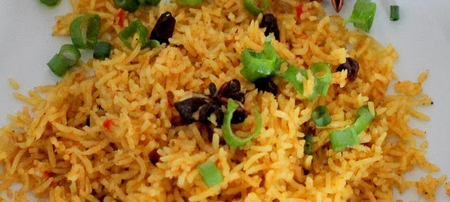 Like most of noodle dishes of Indonesia, mie celor can trace its origin back to Chinese influences. It was popularly believed that Palembang preference of sweet flavour was due to Javanese influences that favoured palm sugar.
Like most of noodle dishes of Indonesia, mie celor can trace its origin back to Chinese influences. It was popularly believed that Palembang preference of sweet flavour was due to Javanese influences that favoured palm sugar.
Indeed, Palembang absorbs many Javanese elements, including language and cuisine. For example, both Javanese and Palembang Malay dialects refer fish as iwak, and cooking method employing banana leaf package as brengkes or brengkesan. Martabak Palembang and nasi minyak which uses ghee, on the other hand, demonstrate Indian cuisine influence in the city.
